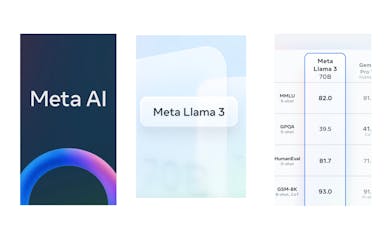How to start creating content if you’re not sure where to begin

The three-step guide to sharing your voice
You pride yourself on Inbox zero, whip through work presentations, and turn around your to-do list fast. But then you open Twitter or a Medium page and your productivity comes to a screeching halt. Why, when you finally sit down to write a blog post or tweet, can it feel almost impossible to get started?
If you’ve never journaled or published work using your own voice, developing the mindset to share your point of view can feel uncomfortable. Think about it: in high school, college or grad school, you wrote thematically for your instructors. Unless you blogged, wrote op-eds, or published in print or online, you probably never wrote for an outside readership or shared your personal thoughts all that publicly.
But then you graduated and boom: welcome to the world of #content. In my conversations with people in tech, startups, and venture capital, I frequently hear the following: “I know I need to write more, tweet more and be ‘More Online,’ but I don’t know where to start.” Of course it’s hard. The majority of people have never really shared their thoughts, expertise, or point of view with a real audience in a professional context. But, beside that, up until now, you’ve probably never fully spoken as you.
It can be intimidating to share your voice, and some may feel vulnerable when they think about putting themselves out there. This internal monologue might sound familiar: “What do I want to say? Will people care what I think? Should I talk about this since I know someone will know more than me? Who will even read it?” Add to that endless other self-doubt-inducing questions that all lead you to close out of Twitter or exit the Medium draft. Next thing you know, you’re saying: “I’ll do it… eventually.”
Even though I worked in journalism before becoming a content person, I was reporting other people’s stories — not sharing my own. Coming out of that experience, however, I developed a belief that everyone has something unique to say and valuable to share. And it’s not just me. More than ever, professionals across industries recognize the upside of creating their own digital footprint: improved professional reputation, more awareness for their company, career advancement, network building, and more. They just have no idea where to begin.
Don’t feel timid about sharing your voice. You are the only person in the world with your experiences and perspective. People will want to hear from you, and your thoughts will find an audience. You just have to get them out there.
Here are three first steps I suggest to help people get started:
1. Do some real-time writing. If you look at my Google calendar, you’re not going to see 30 minutes blocked for “writing time.” That might work for some people, but if you’re like me, the chances you’re going to summon the creativity you need to produce something great in that 30 minute window are probably pretty small. Instead, keep a doc open in your tabs at all times or have a catchall page in a notes app for your thoughts, ideas, and other random things you find interesting. If you feel like you really stumbled upon something great, pour all your thoughts out in that moment. People who’ve been at work events with me know I’m going to pull out my phone mid-conversation if I get a content idea. Whichever route you go, return to it and keep adding. Eventually you’ll have a full-fledged blog post, if not a series of disparate Tweets people might find interesting.
2. Share relevant news/articles with your thoughts on them. Head over to Twitter and see what people are talking about. You can engage via replies to other tweets if you have a good point to add. Or, if you have something really interesting to share, tweet the news article with some commentary. Retweeting an article without commenting can be helpful, but it doesn’t tell your followers anything about what’s inside your head. Quote tweeting is a really easy, low pressure first step to showing your interests and/or subject matter expertise on something you know well that’s timely.
3. Workshop tweets for future blog posts. If you want to share your thoughts on a topic, you don’t need to have authored a Master’s thesis on it to give you credibility. Write the ideas down and save the tweet(s) in drafts. If you keep coming back to it, send it over to a friend or colleague and ask what they think. If they agree that the idea is solid, others will too. If the resultant tweet sparks a conversation and others engage, you can use those insights to…wait for it…write a blog post. Think about workshopping tweets as a way to gauge interest around a general theme or topic and test it with your followers in a low-commitment, bite-sized format. You can dive in deeper once you know there’s an audience that wants to hear what you have to say on the matter.
Reminder: you don’t need permission to create content. You already have the tools you need. You just have to get started.
Comments (4)
Lesley Patterson
Poet, Writer, Small Business Owner
April Chilldres
Tech Evangelista
Leora Crist
Alice Wonderson
Hi there! I am new here
More stories

Kyle Corbitt · How To · 3 min read
What we've learned in 3 days of Llama 3

Aaron O'Leary · Announcements · 2 min read
Introducing Shoutouts

Finn Lobsien · Opinions · 5 min read
Can Devin AI Replace Product Managers?

Aaron O'Leary · News · 2 min read
Meet Nvidia's new localized AI chatbot

Sarah Wright · News · 2 min read
The top 15 AI products from 2023

